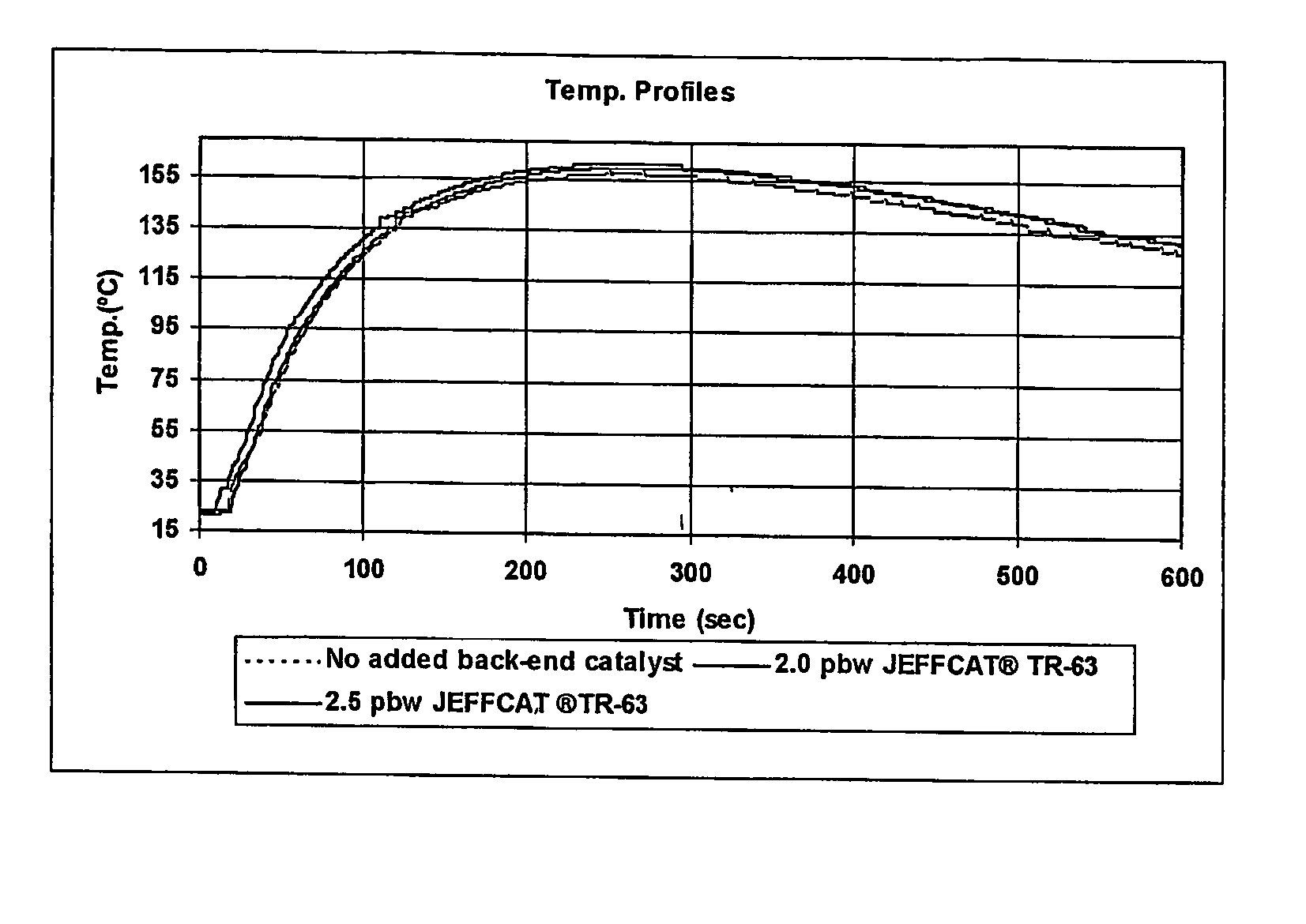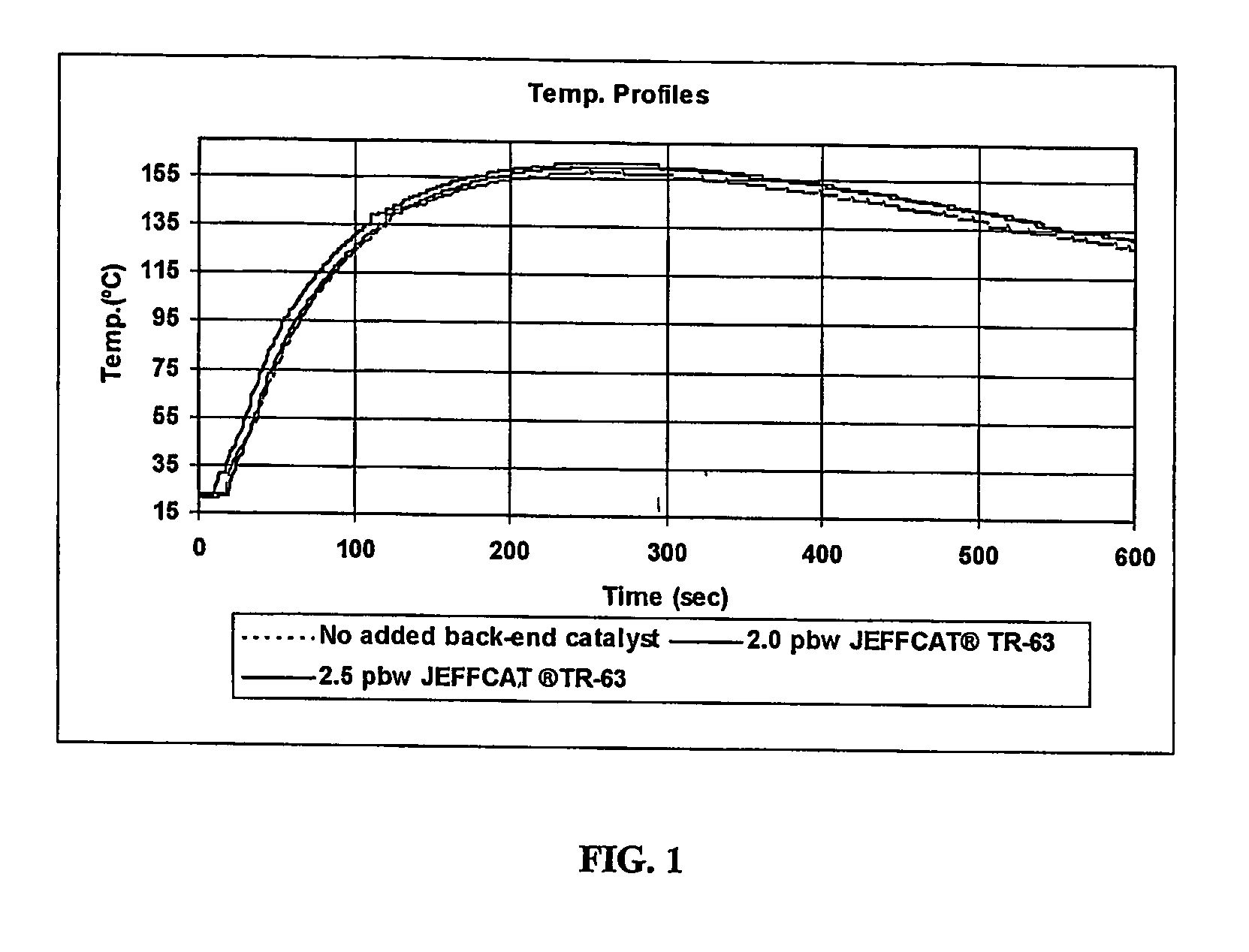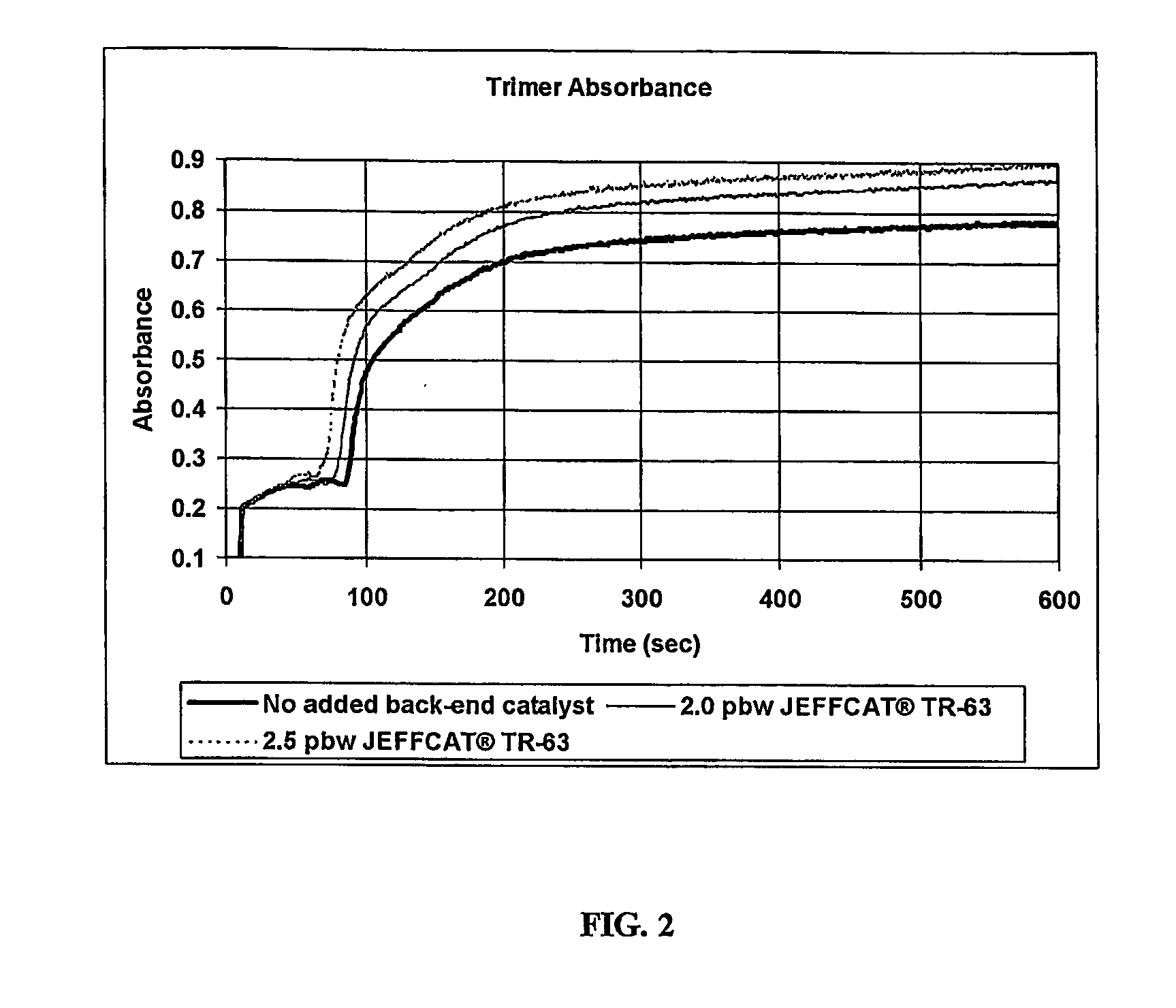Low-Odor Catalyst for Isocyanate-Derived Foams and Elastomers
a technology of isocyanate and catalyst, which is applied in the direction of physical/chemical process catalyst, organic compound/hydride/coordination complex catalyst, etc., can solve the problem of not being able to delay the initiation time as desired without prolonging the cure tim
- Summary
- Abstract
- Description
- Claims
- Application Information
AI Technical Summary
Benefits of technology
Problems solved by technology
Method used
Image
Examples
Embodiment Construction
[0009] The present invention is directed at including a particular quaternary ammonium cation as part of the catalyst package used in the curing of urethane foams and elastomers which improves isocyanate conversion and decreases the time it takes to complete reaction of the isocyanate with the reactive components, all while preventing strong ammonia-like odors in the foam. Advantages of using the materials of the present invention include the fact that conversion of the isocyanate at lower temperatures occurs when an appropriate trimerization-promoting catalyst is used to catalyze the reaction of the isocyanate with itself or other crosslinkable moieties. The conversion at lower temperatures can in turn shorten the time required of the material to reside in a press, thus enabling faster manufacturing cycle times, improved productivity, and reduced costs. In addition, lower density foam is obtained when tris-(hydroxyethyl)methyl ammonium cation is included in the formulations from wh...
PUM
| Property | Measurement | Unit |
|---|---|---|
| reaction temperature | aaaaa | aaaaa |
| weight | aaaaa | aaaaa |
| total weight | aaaaa | aaaaa |
Abstract
Description
Claims
Application Information
 Login to View More
Login to View More - R&D
- Intellectual Property
- Life Sciences
- Materials
- Tech Scout
- Unparalleled Data Quality
- Higher Quality Content
- 60% Fewer Hallucinations
Browse by: Latest US Patents, China's latest patents, Technical Efficacy Thesaurus, Application Domain, Technology Topic, Popular Technical Reports.
© 2025 PatSnap. All rights reserved.Legal|Privacy policy|Modern Slavery Act Transparency Statement|Sitemap|About US| Contact US: help@patsnap.com



